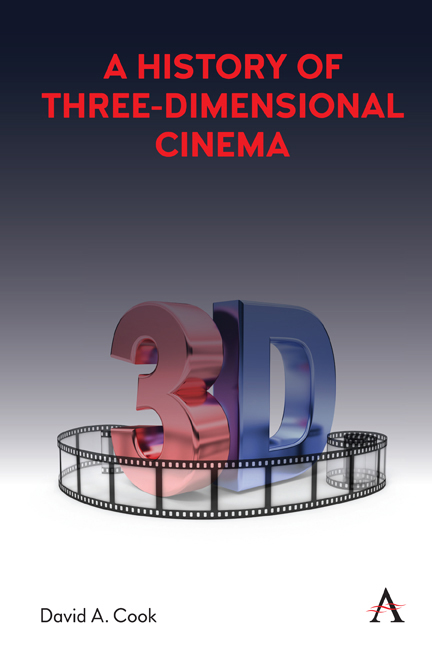Book contents
- Frontmatter
- Dedication
- Content
- List of Figures
- Acknowledgements
- Prefatory Note/Introduction
- 1 “A New Way to Simulate Presence”: The Foundations of Stereoscopic Entertainment, 1427–1888
- 2 “A Very Vivid Impression of Movement”: Early 3D Cinema, 1895–1952
- 3 “See It in 3 Dimension!”: The First Hollywood 3D Boom, 1952–55
- 4 Stereoscopic Revival, 1970–85
- 5 The Age of IMAX, or the “Immersive Cinema,” 1986–2009
- 6 The Blockbuster Years: Digital 3D, 2010–20
- 7 “A Different Kind of Mental Image”: Some Aesthetic Considerations about 3D
- 8 “Experience on Demand”: Virtual Reality
- 9 Conclusion
- 3D Discography: Discs Viewed or Sampled in Preparation for This Book
- Selected Bibliography
- Index
5 - The Age of IMAX, or the “Immersive Cinema,” 1986–2009
Published online by Cambridge University Press: 22 October 2021
- Frontmatter
- Dedication
- Content
- List of Figures
- Acknowledgements
- Prefatory Note/Introduction
- 1 “A New Way to Simulate Presence”: The Foundations of Stereoscopic Entertainment, 1427–1888
- 2 “A Very Vivid Impression of Movement”: Early 3D Cinema, 1895–1952
- 3 “See It in 3 Dimension!”: The First Hollywood 3D Boom, 1952–55
- 4 Stereoscopic Revival, 1970–85
- 5 The Age of IMAX, or the “Immersive Cinema,” 1986–2009
- 6 The Blockbuster Years: Digital 3D, 2010–20
- 7 “A Different Kind of Mental Image”: Some Aesthetic Considerations about 3D
- 8 “Experience on Demand”: Virtual Reality
- 9 Conclusion
- 3D Discography: Discs Viewed or Sampled in Preparation for This Book
- Selected Bibliography
- Index
Summary
The Creation of IMAX
During Expo 67 in Montreal, two shorts produced by the National Film Board of Canada (NFB) were presented that used 35mm and 70mm film projected simultaneously onto five screens, combining them into a single image in the manner of Cinerama. They were In the Labyrinth (Roman Kroitor, Colin Low, and Hugh O’Connor, 1967) and Man and the Polar Regions (Graeme Ferguson, 1967), and, according to Time magazine, they both produced a “stunning visual display […] [to] suggest that cinema—the most typical of 20th century arts—has just begun to explore its boundaries and possibilities.” But there were technical difficulties with the process that led Kroitor, Ferguson, Robert Kerr, and William C. Shaw to found the Multiscreen Corporation in September 1967 to design and build a single-camera/ single-projector system that would produce large-screen images with a very tall aspect ratio (ultimately between 1.42:1 and 1.90:1) for theaters with steeply raked stadium seating. Their system used 70mm film running horizontally at 15 perforations per frame to produce an area nine times larger than standard 35mm and three times that of conventional 70mm film, which at the time ran vertically at five perforations per frame. Projected on a slightly curved screen more than seven stories tall (75–117 feet), such images provided a dramatically immersive experience. Two years later, the company was renamed IMAX, which is not an acronym but an invented word evocative of “maximum image.” Appropriately Colin Low, one of the founders, later remarked “I always felt that IMAX should be in 3-D.”
In 1970, Tiger Child (Donald Brittain), the first IMAX film, was shown at Expo 70 in Osaka, Japan, and the following year the first permanent IMAX system was installed at the Cinesphere Theater in Toronto, debuting in May 1971 with the travelogue North of Superior (Graeme Ferguson). The first IMAX theater with hemispheric dome screen geometry was opened in 1973 in San Diego, where it doubled as a planetarium, and the first permanent IMAX 3D theater was built in Vancouver, British Columbia, in 1986 for Expo 86, where it showed the first IMAX 3D film, Transitions (Colin Low and Tony Ianzelo), produced by the NFB.
- Type
- Chapter
- Information
- A History of Three-Dimensional Cinema , pp. 81 - 100Publisher: Anthem PressPrint publication year: 2021



